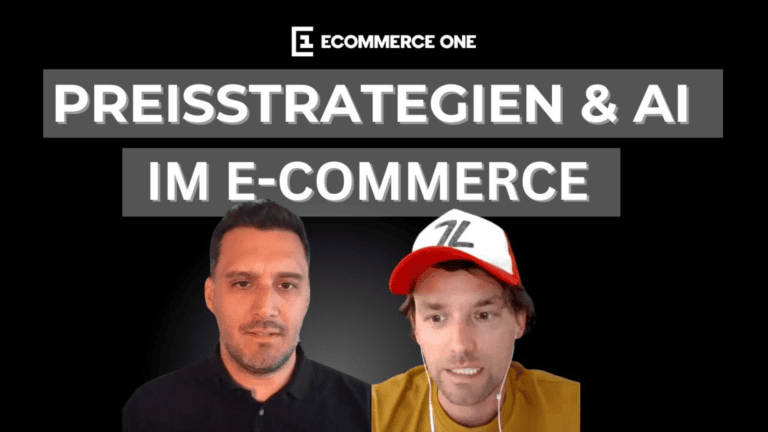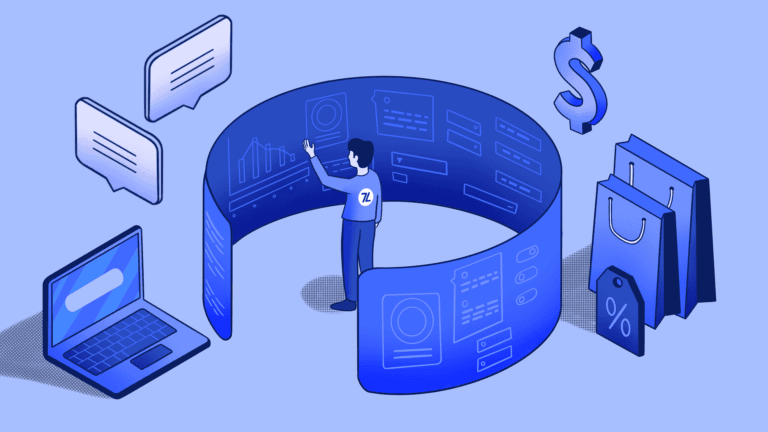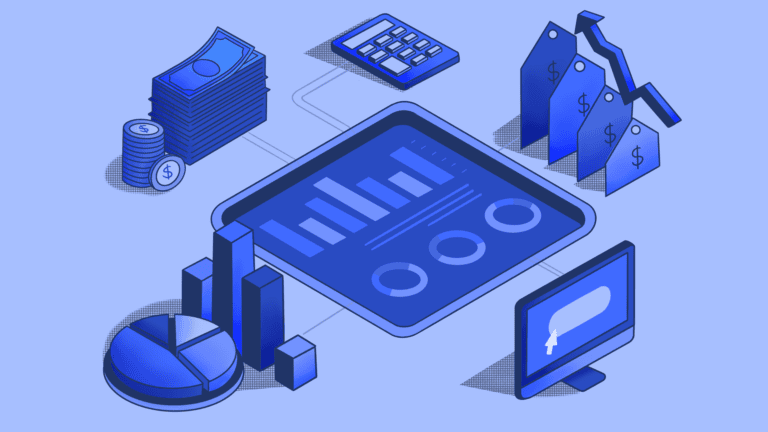What is dynamic pricing?
In simple terms, dynamic pricing is a pricing strategy in which the prices of a product or service are regularly adjusted. The adjustment often takes place automatically depending on influencing factors from the market environment. It has been a mainstay of the travel industry, as companies have traditionally utilized it to adjust prices for airline tickets and hotel rooms. The events industry has also used dynamic pricing for years to adjust ticket prices for sports games and concerts.
In the e-commerce space, Amazon has been a pioneer and leader in using dynamic pricing to continuously adjust and reprice items. Amazon’s competitive edge has been greatly influenced by their ability to adjust prices across an assortment of millions of products, as frequently as every few minutes. As a result, many other major e-commerce retailers have had to adopt dynamic pricing technology to remain competitive with Amazon.
Dynamic pricing isn’t limited to these major industries or to retail giants, however. Increasingly, smaller and mid-size companies, as well as traditional and omnichannel retailers are adopting dynamic pricing strategies. This increased level of use has been enabled by the availability of pricing technology and partners who can help companies integrate this powerful capability into their overall pricing strategies.
What is influencing the growth of dynamic pricing for e-commerce?
The rapid rate of growth in the e-commerce space has been accompanied by a rapid rate of technological development. As e-commerce leaders have grown, they’ve been able to innovate and develop strategies that give them a competitive advantage. While players like Amazon have been amongst the drivers of dynamic pricing technology, the methods they originated are now more accessible and easier for companies to implement than ever.
Growing complexities in e-commerce retail
Today, it’s incredibly easy for online shoppers to compare prices. With just a few clicks, or by using a simple app or browser plugin, a shopper can quickly find out which ecommerce retailer sells a particular item at the lowest price. And with the trend continuing to shift towards consumers shopping online – influenced by the Covid pandemic and poised to continue – retailers must optimize their platforms and the methods by which they sell their products. As a result, pricing is an increasingly important tool which e-commerce retailers need to use to remain competitive.
A data explosion
E-commerce retail has broadened the retail landscape and in tandem, has been a contributor to the massive growth of consumer data. Every time a consumer uses a website, makes a purchase, or registers for a newsletter, there is data generated. While this increased amount of data has proven difficult to manage using conventional, human-driven methods, it has been essential to the development of advanced deep learning technologies and the capabilities this technology enables.
The rise of machine learning technology
AI technology, such as machine learning and deep learning, is uniquely able to process the massive amounts of data generated by ecommerce and other digital processing mediums. Today, machine learning technology has a high level of maturity and it is utilized in a broad range of applications, including for retail. Price and promotion optimization is one area in which machine learning is proving impactful, being the most accessible to integrate and having the most effective business results.
What are the different types of dynamic pricing?
Rule-based pricing
In its simplest form, traditional dynamic pricing is based on a set of predefined rules, which the user sets to determine how and when a price adjustment is made. Prices are calculated on fixed formulas: for example, setting a minimum margin to 20%, or setting a rule where prices must always match those of competitor X.
Machine learning based pricing
Machine learning-based pricing utilizes the capabilities of deep learning and automation to expand the range of capabilities when it comes to price setting and management. Machine learning models can measure price elasticity, or even model the entire demand curve for individual products. The algorithms that are used to build machine learning models are able to take into account a much broader range of data and influential factors than traditional pricing methods can. This gives retailers greater control over their prices, allowing them to fine tune them to meet the optimal price points which maximize their profits and revenues.
Predictive pricing
Predictive pricing is the latest in machine learning based pricing. Building on the capabilities of deep learning technology, predictive pricing uses algorithms to build highly accurate forecasts of the impact of price changes on business goals. This puts the user in control, allowing them to run different scenarios and test approaches to determine the optimal prices before going live with any adjustments. This is especially impactful for e-commerce retailers, who are often dealing with seasonal or rotating product assortments that undergo several changes throughout the retail cycle.
How is dynamic pricing used in ecommerce?
As detailed above, the dynamic pricing systems implemented by e-commerce retailers are varied and can take different forms. While dynamic pricing is increasingly becoming the standard practice for e-commerce price management, it may be utilized in different ways depending on the retail segment.
Amazon is one of the pioneers of dynamic pricing, and implemented machine learning based dynamic pricing methods years before their competitors did. Amazon changes its prices every 10 minutes on average. In 2020, their annual revenue was up 38% to $386 billion, a yearly increase of over $100 billion. Amazon’s net profit was up 84% for the year as compared to last year.
Ahead of Amazon, the largest retailer in the US remains Walmart, who had to pivot from their stationary retail approach and adopt ecommerce to remain competitive with Amazon in the mid-2010’s. Today, Walmart is a major user of dynamic pricing in the ecommerce space, changing their prices upwards of 50,000 times a month. In 2021, Walmart’s total revenue increased 2.7% for the first quarter and U.S. sales grew 5% driven by a strong performance in e-commerce sales, which were up 37%. Today, Walmart’s e-commerce represents over 12% of total sales.
Target is another major retailer that has been utilizing dynamic pricing strategies, not only for its ecommerce sales but also in stores. Their dynamic pricing approach tracks users’ distance from a physical store as a measure of intention to buy, and adjusts prices accordingly. They also set prices depending on a user’s location, for instance the city or suburb they are based in and the economic conditions of that area. In 2021, Target’s first quarter comparable sales grew 22.9 percent, on top of 10.8 percent growth last year. Store comparable sales increased 18.0 percent, while digital comparable sales grew 50 percent, on top of 141 percent growth in 2020.
While Amazon, Walmart, and Target have all been able drive innovation on their platforms and in their stores by developing and building their own in-house technologies, today the same methods that they use are available to smaller and mid-sized companies via advanced pricing softwares and solutions.
What are the benefits of dynamic pricing for e-commerce?
A dynamic pricing strategy for e-commerce retail is nearly always superior when compared to static pricing. Dynamic pricing enables e-commerce retailers to be agile and to remain competitive in the face of a rapidly changing and evolving market.
Not all solutions are alike, however, and it is critical for retailers to ensure that they are utilizing the latest available pricing technology. Simplistic or rule-based dynamic pricing approaches are not able to meet the complexities of today’s market conditions, and retailers who utilize them are systematically losing out on potential profits. In contrast, advanced pricing strategies, such as machine learning based pricing or predictive pricing, will give retailers the competitive edge they need. Not only that, they are a win-win for businesses: the impact of improved price optimization on profits means that the investment in advanced pricing technology will reach a fast ROI and pay for itself.
Advanced dynamic pricing strategies are automated, whether fully or partially, which saves teams the manual time and effort of setting and managing pricing rules. They are able to measure broader ranges of both internal and external influential factors, which may have an impact on customer’s willingness to pay. And they simplify the price management process, creating greater efficiencies and making companies more agile and responsive to market changes and fluctuations.
Did you know?
Profit increases on average of 10% on average are possible for e-commerce retailers using with machine learning-based pricing software. 7Learnings has demonstrated this capability with A/B tests with customers from e-commerce and other retail sectors.
What are the latest developments in dynamic pricing technology for e-commerce?
For many reasons covered, it is clear that rule-based pricing is not the ideal method for price optimization for e-commerce, and advanced machine learning technologies are the best approach to a robust dynamic pricing strategy. The advanced algorithms used by machine learning based pricing are able to take both internal and external data into consideration. They are also able to process large datasets, much more efficiently than previous technologies.
The latest generation of advanced dynamic pricing technology, predictive pricing, builds on the capabilities of machine learning based pricing with its use of powerful forecasting and optimization algorithms. With these, this technology derives even more value from the existing data. Its advantages include:

How can 7Learnings help you implement dynamic pricing for e-commerce?
7Learnings offers companies a simple and smart way to optimize their prices. With our predictive pricing software, we have helped some of the top e-commerce retailers in Europe to improve their pricing processes through machine learning. Using the latest deep learning technology, our application predicts demand, sales, and price elasticity for any product. And with just one click, our customers can generate market-driven prices that maximize profits while taking into account limiting factors such as current inventory levels.
With our innovative price optimization tools, teams gain insights they need to make better, more impactful business decisions. Our software is simple to use and integrates seamlessly into your backend system, helping you streamline your operations while creating immediate business impact.
It is clear that predictive pricing holds major potential for retailers, allowing them to improve their pricing strategy, easily optimize their prices, and maximize their profit potential. At 7Learnings, we have more than 10 years of experience with machine learning based pricing technology, and leading European retailers use our technology to optimize their prices. If you want to learn more about the potential of next generation predictive pricing for your business, please reach out to us to arrange a product demo.



